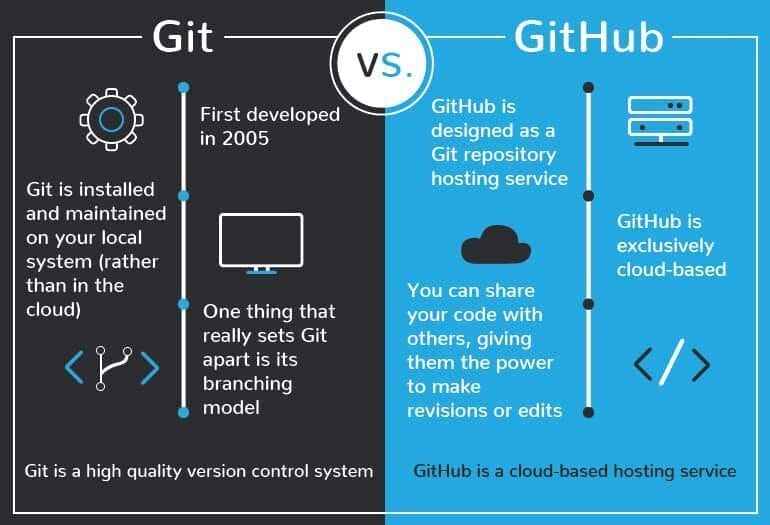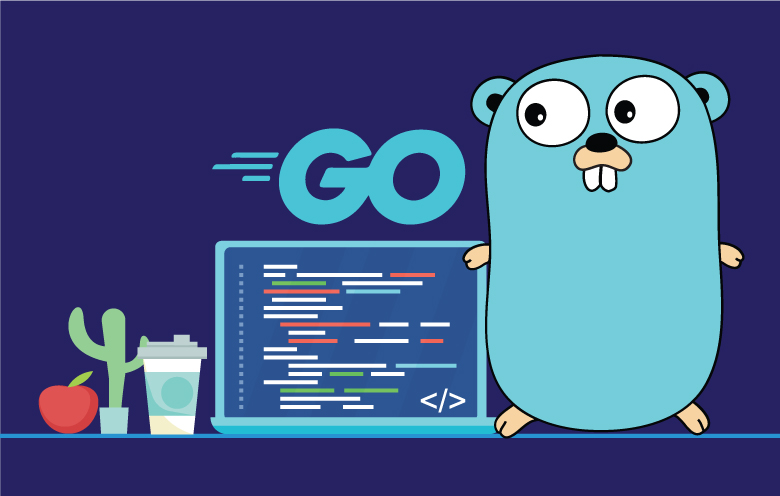Category: Software Development
-

Chapter 15: Squashing Commits and Maintaining a Clean History
•
Understanding commit squashing Commit squashing is a technique used in Git to combine multiple commits into a single commit before merging them into the main branch. This process helps maintain a cleaner and more organized commit history, making it easier to review and understand the evolution of the codebase over…
-

Chapter 14: Pair Programming with Git
•
Techniques for effective pair programming Techniques for effective pair programming involve clear communication, defined roles, and collaboration tools. Pair programming, where two developers work together at one workstation, can significantly improve code quality and knowledge sharing. Here’s how to make it work effectively: Clear Communication Effective communication is the cornerstone…
-

Chapter 13: Using Protected Branches and Required Reviews
•
Implementing branch protection rules Implementing branch protection rules is a critical practice for maintaining the integrity of your codebase, ensuring that only thoroughly reviewed and tested code is merged into important branches like main or master. Branch protection rules can enforce specific workflows, such as requiring pull request reviews before…
-

Chapter 12: Advanced Collaborative Workflows
•
Gitflow workflow The Gitflow workflow is a branching model designed to facilitate parallel development, improve collaboration, and streamline release processes. Developed by Vincent Driessen, this workflow provides a robust framework for managing development and release cycles in projects. It defines a set of conventions for organizing branches and integrating changes,…
-

Chapter 11: Continuous Integration and Continuous Deployment (CI/CD)
•
Introduction to CI/CD pipelines An effective Continuous Integration/Continuous Deployment (CI/CD) pipeline is crucial for modern software development, enabling teams to automate processes from code changes to deployment. Here’s an introduction to CI/CD pipelines without using a list: Introduction to CI/CD Pipelines: In software development, CI/CD pipelines are automated workflows that…
-

Chapter 10: Handling Merge Conflicts
•
What are merge conflicts and how they occur Merge conflicts occur when Git is unable to automatically resolve differences between two branches during a merge operation. They typically arise when two or more branches have diverged and Git cannot determine which changes should take precedence. Here’s a detailed explanation without…
-

Chapter 9: Managing Issues and Project Management Tools
•
Using issues to track bugs and feature requests Using issues effectively is crucial for tracking bugs and managing feature requests in a collaborative software development environment. Here’s a detailed exploration of this topic: Introduction: Issues serve as a centralized way for teams to track bugs, discuss improvements, and manage tasks…
-

Chapter 8: Code Review Process
•
Importance of code reviews in collaborative projects In collaborative software development projects, code reviews play a crucial role in ensuring code quality, fostering knowledge sharing, and promoting team collaboration. Here’s an expanded explanation without using a list: Importance of Code Reviews in Collaborative Projects: Code reviews are essential for maintaining…
-

Chapter 7: Pull Requests and Merge Requests
•
Introduction to pull requests In software development using Git, a pull request (often abbreviated as PR) is a fundamental collaboration mechanism for proposing and merging changes into a repository. Here’s an overview without using a list: Introduction to Pull Requests: A pull request serves as a formal request to merge…
-

Chapter 6: Committing Changes
•
Writing good commit messages Crafting clear and informative commit messages is crucial for effective collaboration and project management in Git. Here’s an expanded explanation without using a list: Writing Good Commit Messages: When you make changes to a Git repository and commit them, the commit message serves as a concise…
-

Chapter 5: Forking and Cloning Repositories
•
The concept of forking a repository Forking a repository in Git refers to creating a personal copy of someone else’s repository under your GitHub account. This process allows you to freely experiment with changes without affecting the original repository. Here’s an explanation of forking with an example: Forking a Repository:…
-

Chapter 4: Branching Strategies for Collaboration
•
What are branches and why they matter Branches in Git are parallel lines of development that allow you to work on different features, fixes, or experiments within the same repository. Here’s an explanation without using a list: In Git, branches serve as distinct lines of development within a repository. Each…
-

Chapter 3: Creating and Managing Repositories
•
Initializing a new repository Initializing a new Git repository is the first step in version controlling your project. It sets up a .git directory where Git stores metadata and objects for tracking changes and histories of your files. To initialize a new repository, navigate to your project directory using the…
-

Chapter 2: Setting Up Your Git Environment
•
Installing Git on different operating systems Installing Git on different operating systems is a straightforward process, but the steps can vary slightly depending on whether you’re using Windows, macOS, or Linux. Here’s how you can install Git on each of these platforms. For Windows, you need to download the Git…
-

Chapter 1: Introduction to Git and Collaboration
•
Understanding the importance of version control in software development Understanding the importance of version control in software development is crucial for maintaining an organized and efficient workflow, especially when multiple developers are involved. Version control systems, like Git, allow teams to track changes to the codebase over time. This means…
-

Appendices:
•
Useful Go Tools and Libraries 1. Build and Dependency Management Tools 2. Testing and Benchmarking Tools 3. Code Quality and Static Analysis 4. IDEs and Editors 5. Web Frameworks 6. Database Libraries 7. Networking and HTTP Libraries 8. Concurrency and Parallelism 9. Utilities and Miscellaneous Conclusion These tools and libraries…
-

Conclusion:
•
Recap of Key Concepts Recap of Key Concepts in Go Programming Basics and Syntax Go is known for its simplicity and efficiency, offering a concise syntax that emphasizes readability and maintainability. Key concepts include: Data Types and Structures Understanding Go’s data types and how they are utilized: Functions and Methods…
-

Chapter 14: Best Practices in Go
•
Code Organization and Project Structure Introduction Code organization and project structure are crucial for maintaining readability, scalability, and maintainability in software projects. This chapter delves into the principles, best practices, and tools for organizing code and defining project structure effectively. Importance of Code Organization Organizing code systematically offers several benefits:…
-

Chapter 13: Deployment and Maintenance
•
Building and Distributing Go Applications Building and distributing Go applications efficiently is a key part of the software development lifecycle. This chapter provides a detailed guide on compiling, building, and distributing Go applications for various platforms. Setting Up Your Go Environment Before you can build and distribute Go applications, ensure…
-

Chapter 12: Advanced Topics
•
Reflection and Generics Reflection in Go Reflection is a powerful feature in Go that allows you to inspect and manipulate objects at runtime. It provides the ability to introspect types, access and modify values, and dynamically invoke methods. The reflect package is the cornerstone of reflection in Go. Basics of…
-

Chapter 11: Testing in Go
•
Writing Unit Tests Unit testing is an essential practice in software development that ensures individual components or functions work as expected. In Go, unit tests are written using the testing package. This section will guide you through the basics of writing unit tests, setting up test files, running tests, and…
-

Chapter 10: Database Interaction
•
Database Connection in Go In Go, you typically connect to databases using specialized drivers or libraries that provide a Go interface to interact with the database. Here’s an overview of connecting to databases and performing basic operations: Choosing a Database Driver Example: Connecting to MySQL Database To connect to a…
-

Chapter 9: Building Web Applications
•
Introduction to Web Frameworks in Go Web frameworks are essential tools in modern web development. They simplify the process of building web applications by providing pre-written code, components, and utilities. In Go, several web frameworks enable developers to quickly build robust, scalable, and maintainable web applications. This section explores the…
-

Chapter 8: File Handling and I/O
•
Reading and Writing Files Handling file input and output (I/O) is a common task in many applications. Go provides a robust standard library package, os, to work with files. This package, along with other utilities from the io and bufio packages, makes file operations straightforward and efficient. Reading Files To…
-

Chapter 7: Error Handling and Debugging
•
Error Handling Strategies Error handling is a critical aspect of software development, and Go provides robust mechanisms to handle errors effectively. In this section, we will delve into the principles and practices of error handling in Go, ensuring your programs can gracefully manage and recover from unexpected situations. Understanding Errors…
-

Chapter 6: Packages and Modules
•
Creating Packages Overview and Basics In Go, a package is a collection of Go source files that reside in the same directory and have the same package declaration at the top of each file. Packages can be standard library packages (like fmt, os) or user-defined packages. Example: Creating a Package…
-

Chapter 5: Concurrency in Go
•
Goroutines in Go Overview and Basics Goroutines are a key feature of Go’s concurrency model. They are functions or methods that can be executed concurrently with other goroutines within the same address space. Goroutines are lightweight compared to threads managed by the operating system, allowing Go programs to efficiently utilize…
-

Chapter 4: Data Structures
•
Arrays and Slices give Arrays Arrays in Go are fixed-size sequences of elements of the same type. Once declared, their size cannot change. Example 1: Declaring and Initializing an Array gopackage mainimport “fmt”func main() { // Declare and initialize an array of integers var numbers [5]int numbers = [5]int{1, 2,…
-

Chapter 3: Functions and Methods
•
Defining Functions in Go In Go, functions are defined using the func keyword, followed by the function name, parameters (if any), return type (if any), and the function body enclosed in curly braces {}. Here’s an example: gopackage mainimport “fmt”// Function definition with parameters and return typefunc add(a, b int)…
-

Chapter 2: Control Structures
•
Conditional Statements (if, else, switch) In Go, conditional statements (if, else, switch) are essential for controlling the flow of execution based on certain conditions. Here’s a detailed explanation without using a list: Conditional Statements in Go if Statement: The if statement evaluates a boolean condition and executes a block of…